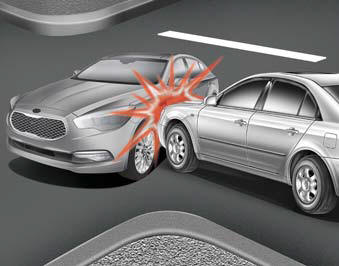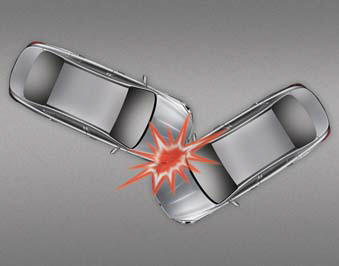 Kia K900: Air bag non-inflation conditions
Kia K900: Air bag non-inflation conditions

In certain low-speed collisions the air bags may not deploy. The air bags are designed not to deploy in such cases because they may not provide benefits beyond the protection of the seat belts in such collisions.

Air bags are not designed to inflate in rear collisions, because occupants are moved backward by the force of the impact. In this case, inflated air bags would not be able to provide any additional benefit.

Front air bags may not inflate in side impact collisions, because occupants move to the direction of the collision, and thus in side impacts, front air bag deployment would not provide additional occupant protection.

In a slant or angled collision, the force of impact may direct the occupants in a direction where the air bags would not be able to provide any additional benefit, and thus the sensors may not deploy any air bags.

Just before impact, drivers often brake heavily. Such heavy braking lowers the front portion of the vehicle causing it to ŌĆ£rideŌĆØ under a vehicle with a higher ground clearance.
Air bags may not inflate in this "under-ride" situation because deceleration forces that are detected by sensors may be significantly replaced by such ŌĆ£under-rideŌĆØ collisions.

Air bags do not inflate in all rollover accidents, even though the vehicle is equipped with side air bags and curtain air bags.

Air bags may not inflate if the vehicle collides with objects such as utility poles or trees, where the point of impact is concentrated to one area and the full force of the impact is not delivered to the sensors.
 Air bag inflation conditions
Air bag inflation conditions
Front air bags
Front air bags are designed to inflate in a frontal collision depending on the
intensity, speed or angles of impact of the front collision.
Side air bags
Side air bags (side an ...
 SRS Care
SRS Care
The SRS is virtually maintenance free and there are no parts you can safely service
by yourself. If the SRS air bag warning light does not illuminate, or continuously
remains on, have your vehicle ...
See also:
Cushion length adjustment (for driverŌĆÖs seat)
Push the control switch forward or backward to move the seat cushion to the desired
length. Release the switch once the seat cushion reaches the desired length. ...
Driving in the rain
Rain and wet roads can make driving dangerous, especially if youŌĆÖre not prepared
for the slick pavement. Here are a few things to consider when driving in the rain:
A heavy rainfall will mak ...
Towing service
If emergency towing is necessary, we recommend having it done by an authorized
K900 Kia dealer or a commercial tow-truck service.
Proper lifting and towing procedures are necessary to prevent dam ...
